In the ever-evolving landscape of email marketing, two platforms have emerged as frontrunners: Iterable and Braze. These powerful tools have revolutionized how businesses connect with their audiences, offering a suite of features designed to enhance engagement, personalization, and overall campaign effectiveness. As companies strive to cut through the digital noise and deliver meaningful content to their subscribers, the choice between Iterable and Braze can significantly impact their marketing success. This comprehensive comparison delves into the strengths, weaknesses, and unique features of Iterable and Braze. Additionally, we’ll explore innovative strategies and introduce Prism Reach, an AI-powered solution designed to further enhance your email marketing efforts.
Key Facts
- Iterable: Known for its user-friendly interface and cost-effectiveness, making it accessible to businesses of various sizes.
- Braze: Excels in advanced segmentation and multichannel marketing, catering to larger enterprises with complex needs.
- Both platforms offer robust personalization capabilities and high email deliverability rates.
- Prism Reach leverages AI to provide deep personalization, complementing the capabilities of both Iterable and Braze.
- Choosing the right platform depends on specific business needs, existing technology ecosystems, and marketing goals.
Iterable vs Braze: A Deep Dive into Features and Performance
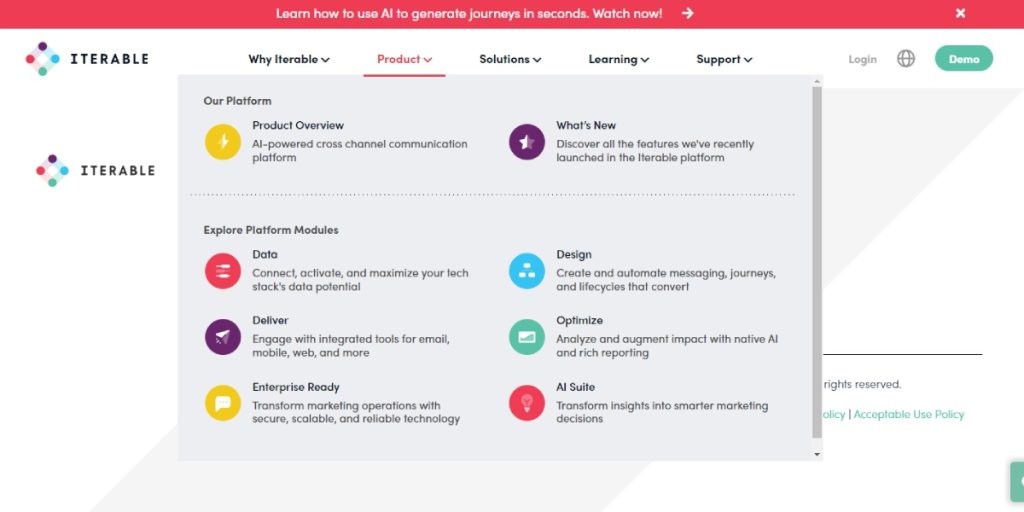
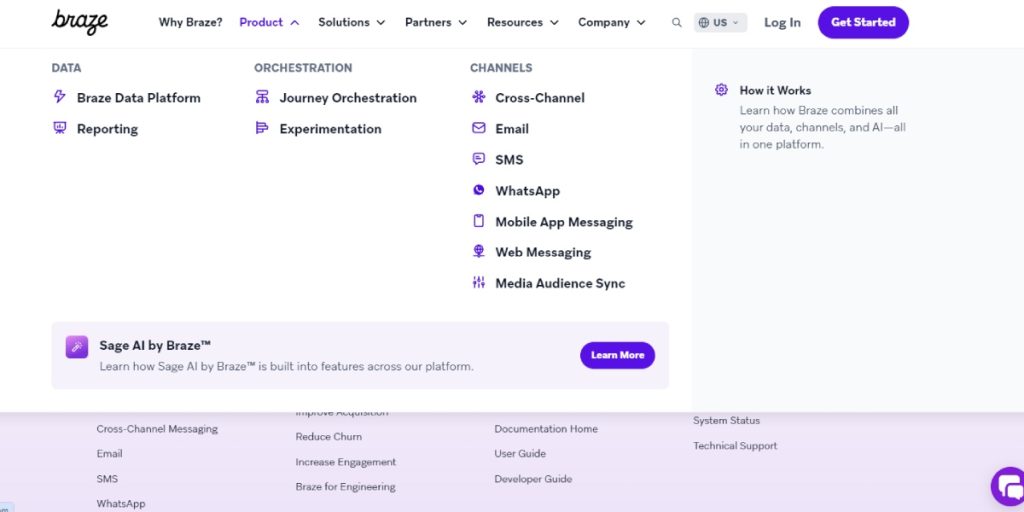
User Interface and Customer Support
Iterable’s user interface stands out for its intuitive design, making it accessible even to those new to email marketing. This ease of use is complemented by exceptional customer support, ensuring users can quickly overcome any challenges they encounter. Iterable’s commitment to user-friendliness doesn’t compromise its functionality, offering a robust set of features that cater to diverse marketing needs.
On the other hand, Braze, while also user-friendly, is designed with larger enterprises in mind. Its interface may have a steeper learning curve but offers more advanced features suitable for complex marketing strategies. Both platforms prioritize user experience, but Iterable edges out in terms of immediate accessibility for newcomers.
Campaign Orchestration and Multichannel Capabilities
Braze’s Canvas Flows feature is a standout tool for campaign orchestration, allowing marketers to create intricate, multi-channel campaigns with visual ease. This feature provides a powerful yet intuitive way to map out complex customer journeys across various touchpoints. Iterable, while also offering multi-channel capabilities, approaches campaign orchestration through its Journey Flows.
Both platforms enable marketers to create sophisticated, behavior-triggered campaigns, but Braze’s visual representation is particularly praised for its clarity and depth. The ability to orchestrate campaigns across email, SMS, push notifications, and in-app messaging is crucial for both platforms, allowing businesses to engage customers through their preferred channels effectively.
Integration and Flexibility
Both Iterable and Braze excel in their integration capabilities, offering flexibility that allows them to fit seamlessly into existing tech stacks. Iterable supports integration with various CRM systems and analytics platforms, facilitating a holistic view of customer interactions. This integration capability ensures that businesses can maintain data consistency across their marketing tools.
Braze offers extensive APIs and partner connectors, providing even more options for custom integrations and advanced functionality. The robust API access of both platforms allows for tailored solutions that meet specific business needs. This flexibility is crucial for businesses looking to create a cohesive marketing ecosystem without disrupting their current workflows or losing valuable data in the process.
Automation and Workflow Management
Both platforms excel in automation and workflow management, offering sophisticated tools to streamline marketing processes. Iterable’s workflow automation capabilities focus on simplifying the design and execution of marketing campaigns, allowing marketers to create complex sequences of actions triggered by customer behavior or time-based rules.
Braze, on the other hand, provides advanced automation tools specifically designed for creating intricate customer journeys. These tools enable marketers to map out detailed, multi-step campaigns that adapt to individual customer interactions and preferences.
The choice between the two platforms in this area largely depends on the specific automation needs of the business and the complexity of their desired marketing strategies. While Iterable offers flexibility and ease of use, Braze provides deeper customization and automation capabilities for more complex marketing needs.
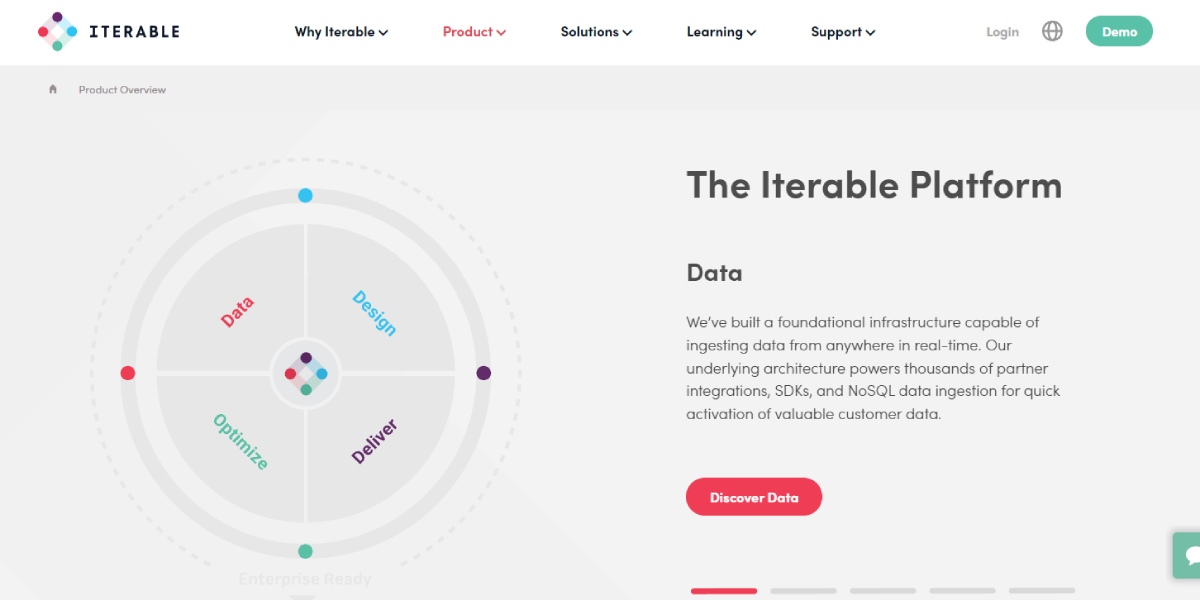
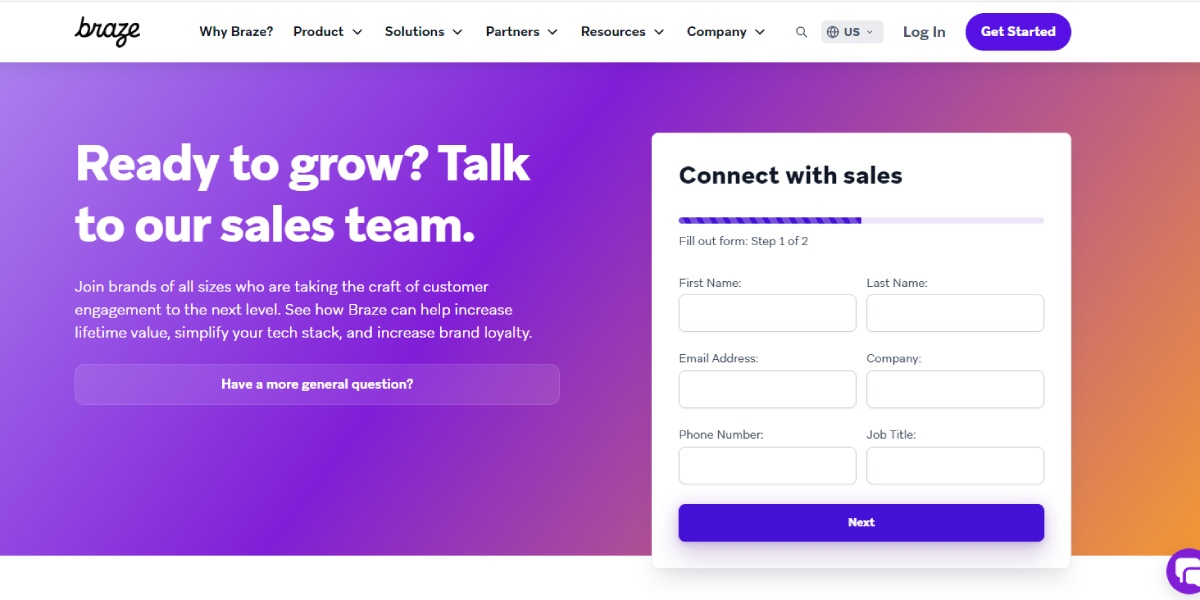
Data-Driven Marketing and Customer Insights
Iterable and Braze both offer powerful features for data-driven marketing, but with different focuses. Iterable excels in behavioral insights, utilizing customer interaction data to strengthen retention and engagement strategies. This approach allows marketers to create highly targeted campaigns based on past customer actions and preferences.
Braze, meanwhile, employs RFM (Recency, Frequency, Monetary) analysis, a method that helps identify and target high-value customers based on their recent purchases, purchase frequency, and monetary value. This feature is particularly useful for businesses looking to maximize revenue from their most valuable customer segments.
Scalability and Enterprise Suitability
While both platforms offer scalable solutions suitable for businesses of various sizes, they have different strengths in this area. Iterable provides scalability that can accommodate growing businesses, offering features that can be expanded as marketing needs become more complex.
Braze is often highlighted as being particularly well-suited for large enterprises with intricate marketing requirements. Its robust infrastructure and deep integration capabilities within the Oracle ecosystem make it a preferred choice for corporations managing complex, multi-faceted marketing operations across various departments and regions.
This scalability ensures that as businesses grow, their marketing platform can evolve to meet increasingly sophisticated needs. Both platforms are designed to handle large volumes of data and complex marketing strategies, making them suitable for enterprises seeking comprehensive and scalable marketing automation solutions.
Hidden Gems: Effective Strategies for Iterable vs. Braze
While Iterable and Braze offer a plethora of features, there are several lesser-known yet highly effective strategies that can significantly enhance your marketing efforts. Here are five hidden gems to leverage within these platforms:
1. Utilize Braze’s Content Cards for In-App Engagement
- Strategy: Implement Braze’s Content Cards to deliver targeted content recommendations directly within your app or website without disrupting the user experience.
- Effectiveness: Increases user engagement by providing relevant content at the right moment.
- Obscurity: Many marketers overlook this feature, focusing instead on traditional push notifications.
- Ease of Implementation: Moderate; requires setup but is straightforward once integrated.
- Uniqueness: Offers a non-intrusive way to enhance user experience and drive conversions.
2. Leverage Iterable’s Real-Time Catalog Feature
- Strategy: Use Iterable’s catalog feature to dynamically generate content based on user behavior, allowing for real-time personalization in emails and campaigns.
- Effectiveness: Enhances relevance of communications, leading to higher engagement rates.
- Obscurity: This capability is often underutilized as many marketers stick to static content.
- Ease of Implementation: High; relatively easy to set up with existing data sources.
- Uniqueness: Provides a flexible approach to content management that adapts to user actions.
3. Implement Multi-Channel Campaigns with API Triggers
- Strategy: Utilize Iterable’s API capabilities to create event-triggered campaigns across multiple channels, enhancing the customer journey.
- Effectiveness: Improves responsiveness and relevance of communications.
- Obscurity: Not all users take full advantage of API capabilities for multi-channel automation.
- Ease of Implementation: Moderate; requires technical knowledge but can be highly effective.
- Uniqueness: Facilitates a more integrated approach to customer engagement.
4. Explore Braze’s Intelligent Channel Selection
- Strategy: Leverage Braze’s AI-powered intelligent channel selection to automatically choose the best communication channel for each user based on their historical engagement data.
- Effectiveness: Increases engagement by optimizing message delivery channels.
- Obscurity: Many marketers manually select channels without utilizing this AI feature.
- Ease of Implementation: Low; once set up, it runs automatically.
- Uniqueness: Provides a data-driven approach to channel optimization.
5. Use Advanced Segmentation with Behavioral Cohorts in Iterable
- Strategy: Implement advanced segmentation using behavioral cohorts in Iterable to target users based on specific actions or inactions over time.
- Effectiveness: Increases campaign relevance and improves conversion rates through targeted messaging.
- Obscurity: Many users rely on basic demographic segmentation rather than behavioral insights.
- Ease of Implementation: Moderate; requires understanding of cohort analysis but is manageable with existing tools.
- Uniqueness: Enables deeper insights into customer behavior patterns.
Prism Reach: An Innovative Alternative
While Iterable and Braze dominate the email marketing landscape, innovative solutions like Prism Reach are emerging to address specific needs in the industry. Prism Reach stands out with its AI-powered approach to personalization, offering a level of content customization that goes beyond traditional segmentation methods.
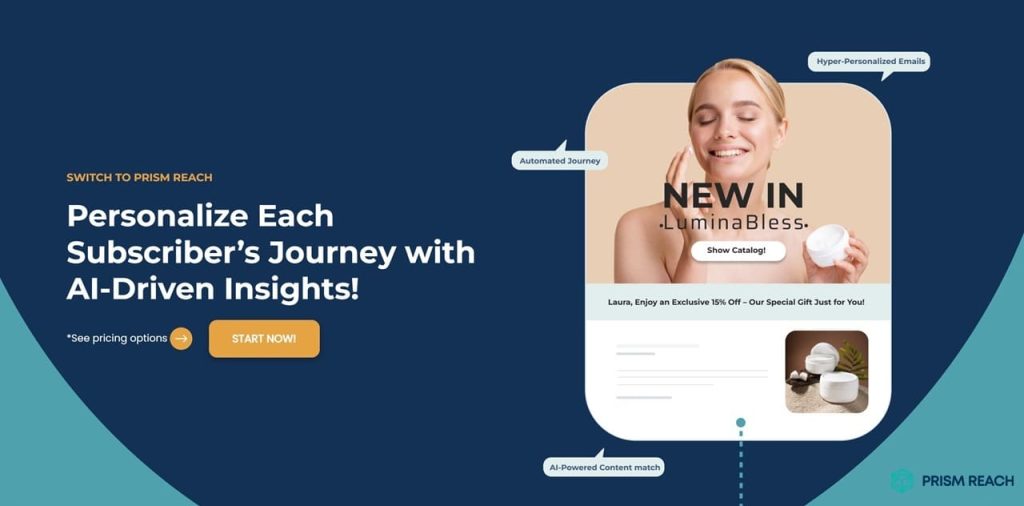
AI-Powered Personalization
Prism Reach leverages sophisticated AI algorithms to personalize newsletter content based on subscriber behavior and preferences. This level of personalization can significantly boost engagement rates, ensuring that your emails resonate with each individual recipient.
Optimal Sending Times
The platform uses predictive analytics to determine the best times to send newsletters, maximizing the likelihood of subscriber engagement. By optimizing send times, Prism Reach helps ensure that your emails are seen and interacted with, even if rendering issues persist.
Advanced AI Features
Prism Reach includes features such as anti-spam checks and high deliverability rates, which are crucial for maintaining engagement levels and avoiding spam filters. These advanced features ensure that your emails reach your audience’s inboxes, enhancing the effectiveness of your campaigns.
Integration and Setup
Prism Reach offers a seamless setup process, allowing for quick integration with existing systems. This ease of integration means that marketers can start leveraging AI-driven personalization without extensive technical expertise, saving time and resources.
Dynamic Content Selection
The AI-driven dynamic content selection feature ensures that each subscriber receives content that is most relevant to them. This targeted approach not only improves engagement but also reduces the impact of any rendering issues by focusing on delivering highly pertinent information.
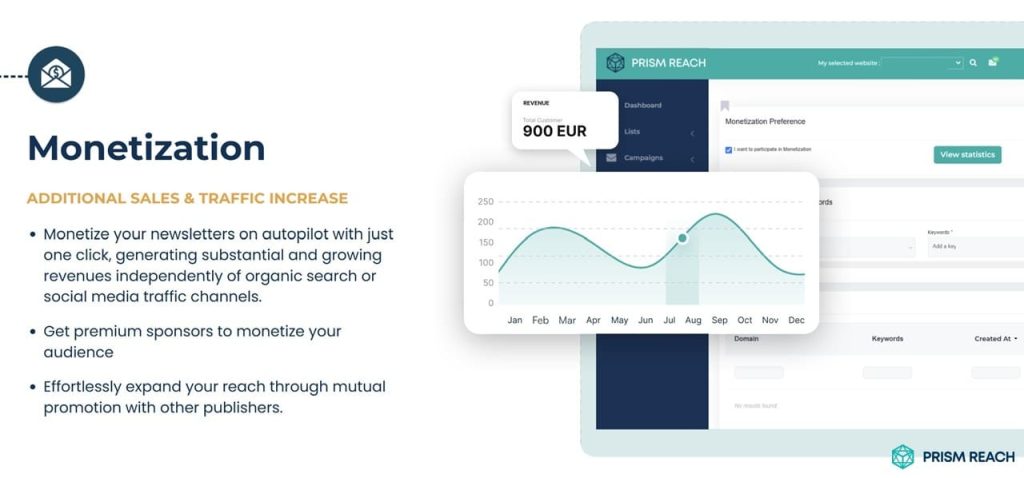
Potential Benefits of Prism Reach
- Enhanced Personalization: Prism Reach’s AI-driven personalization ensures that each email resonates with individual subscribers, increasing engagement and conversion rates.
- Optimized Send Times: By predicting the best times to send emails, Prism Reach maximizes the likelihood that your emails will be opened and read, enhancing overall campaign effectiveness.
- High Deliverability Rates: Advanced AI features such as anti-spam checks help ensure that your emails reach the intended inboxes, reducing the chances of being marked as spam.
Conclusion
Iterable and Braze offer powerful solutions for email marketing, each with its own strengths. Iterable shines with its user-friendly interface, excellent customer support, and cost-effectiveness, making it an attractive option for small to medium-sized businesses or those new to advanced email marketing. Braze, with its powerful segmentation tools and enterprise-grade features, caters well to larger organizations with complex multichannel marketing needs.
However, the emergence of innovative solutions like Prism Reach highlights the rapid evolution of the email marketing landscape. As businesses increasingly seek more personalized and efficient ways to connect with their audiences, AI-powered platforms that offer hyper-personalization and streamlined workflows are likely to gain traction.
Ultimately, the best choice for any business will depend on a careful evaluation of their specific requirements, the desired level of personalization, and their willingness to adopt cutting-edge AI technologies. As the email marketing industry continues to evolve, staying informed about new innovations and being open to adopting emerging technologies will be key to maintaining a competitive edge in digital marketing strategies.
Upgrade Your Email Marketing with AI Personalization!
Citations
- Stitch CX Analysis. (n.d.). Braze vs Iterable: Deciding Between Two Customer Engagement Platform Leaders.
- SaaS Growth Advisory Comparison. (n.d.). Iterable vs Braze: Side-by-Side Comparison.
- Insider Insights. (n.d.). Iterable vs Braze Marketing Automation Platform Comparison.
- Use Insider. (n.d.). Braze vs Iterable: Customer Engagement Platform Comparison.